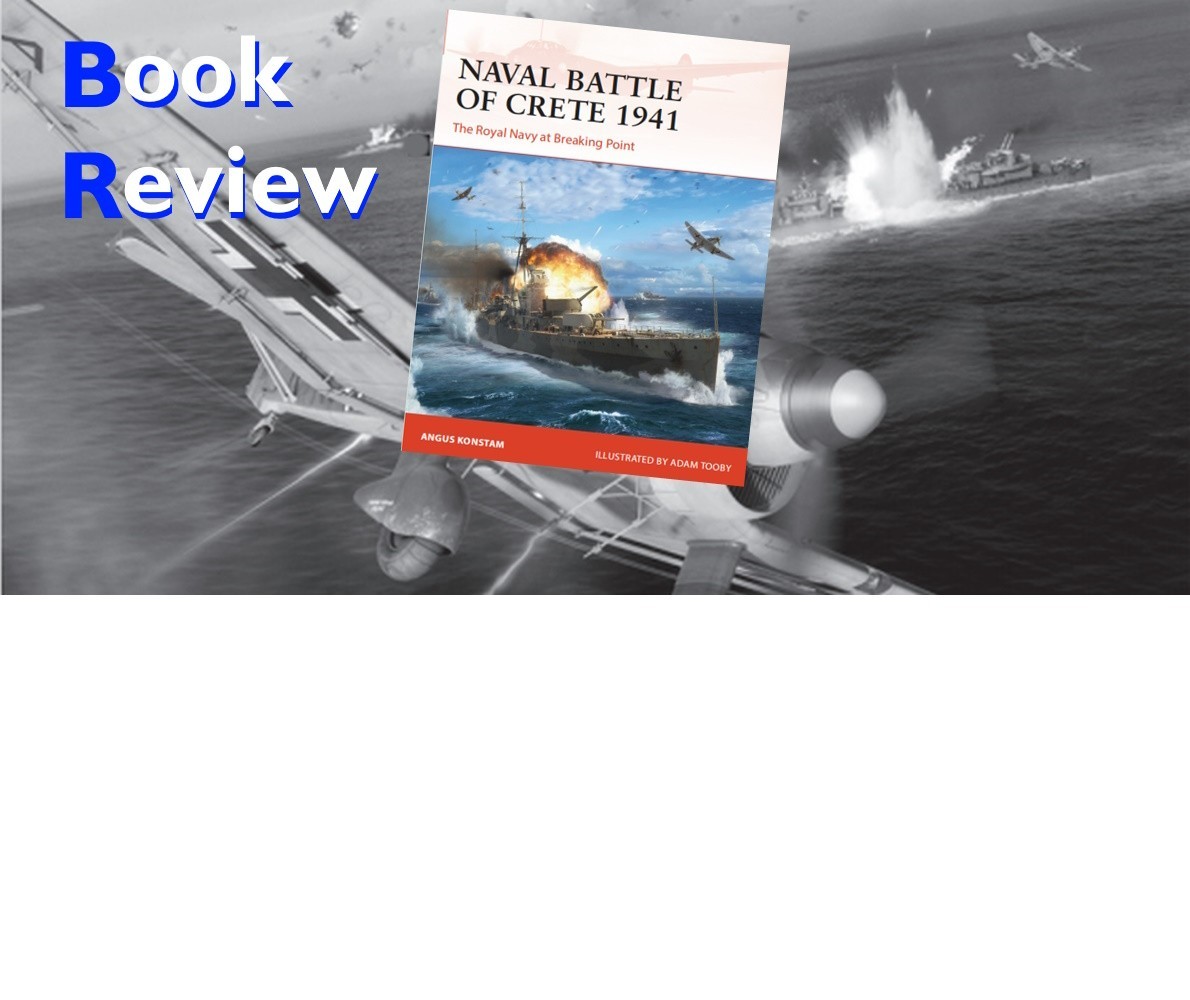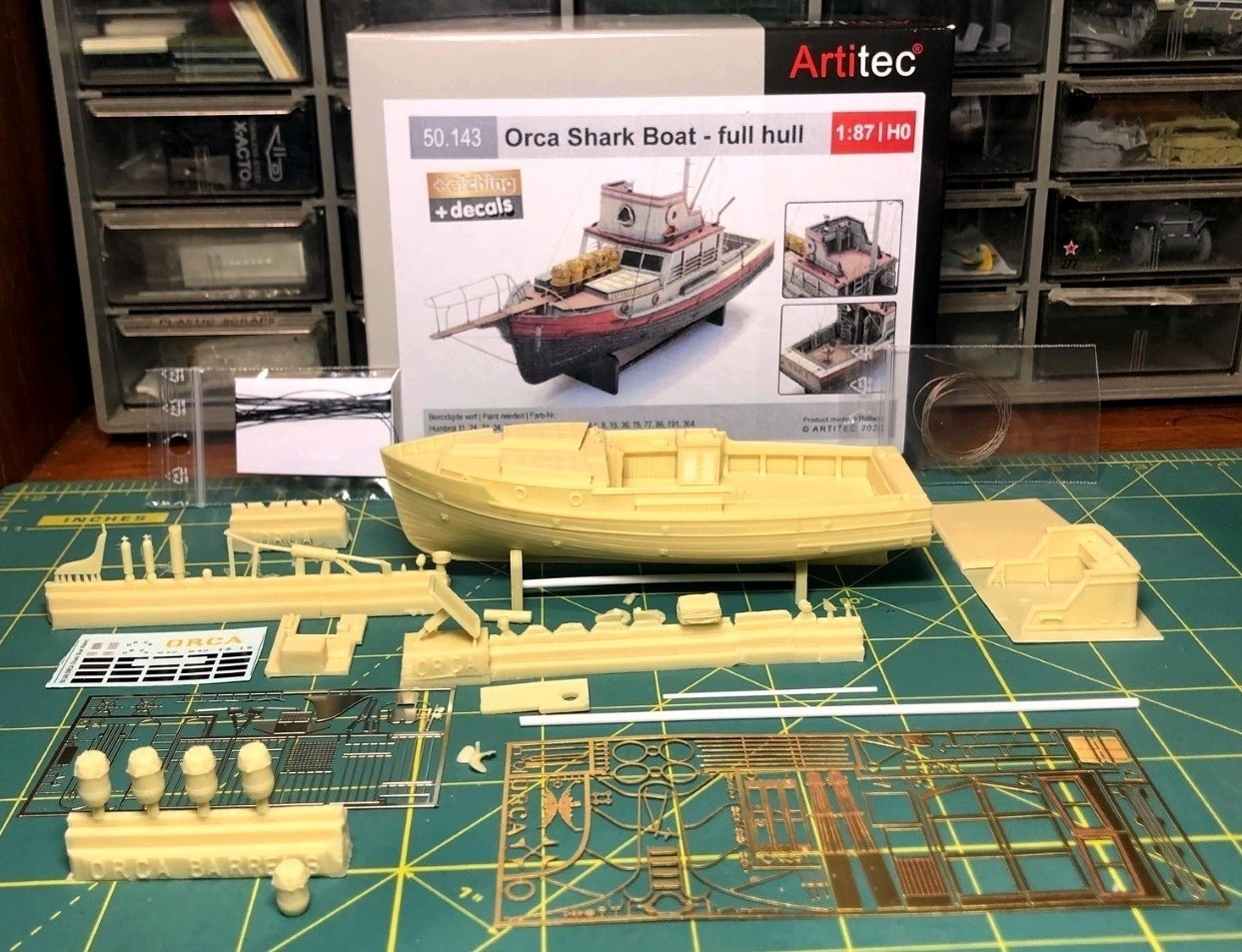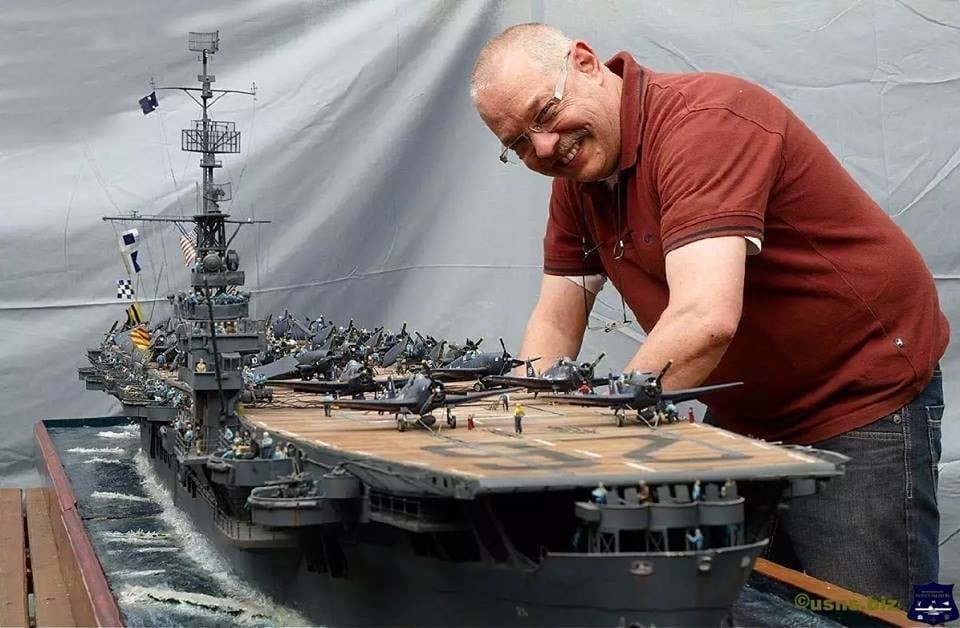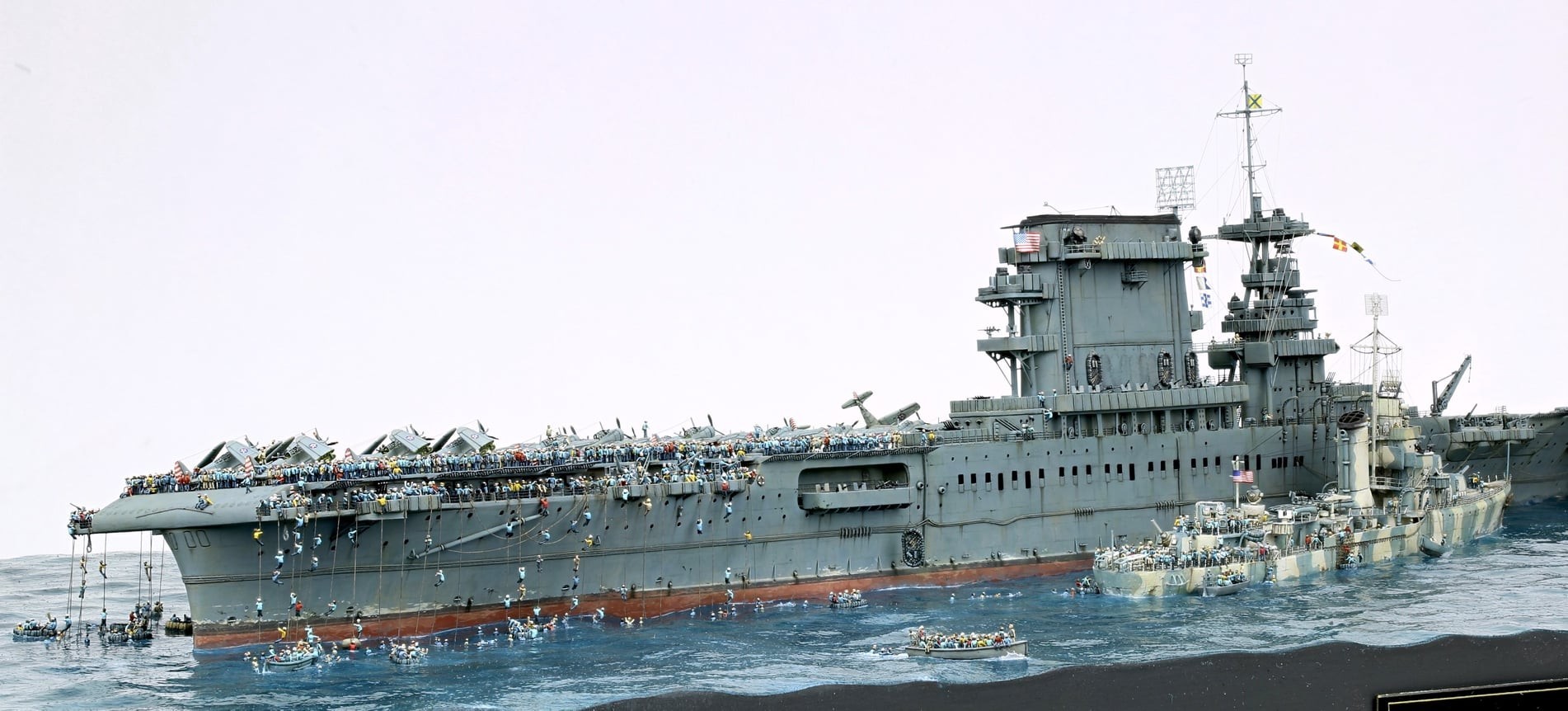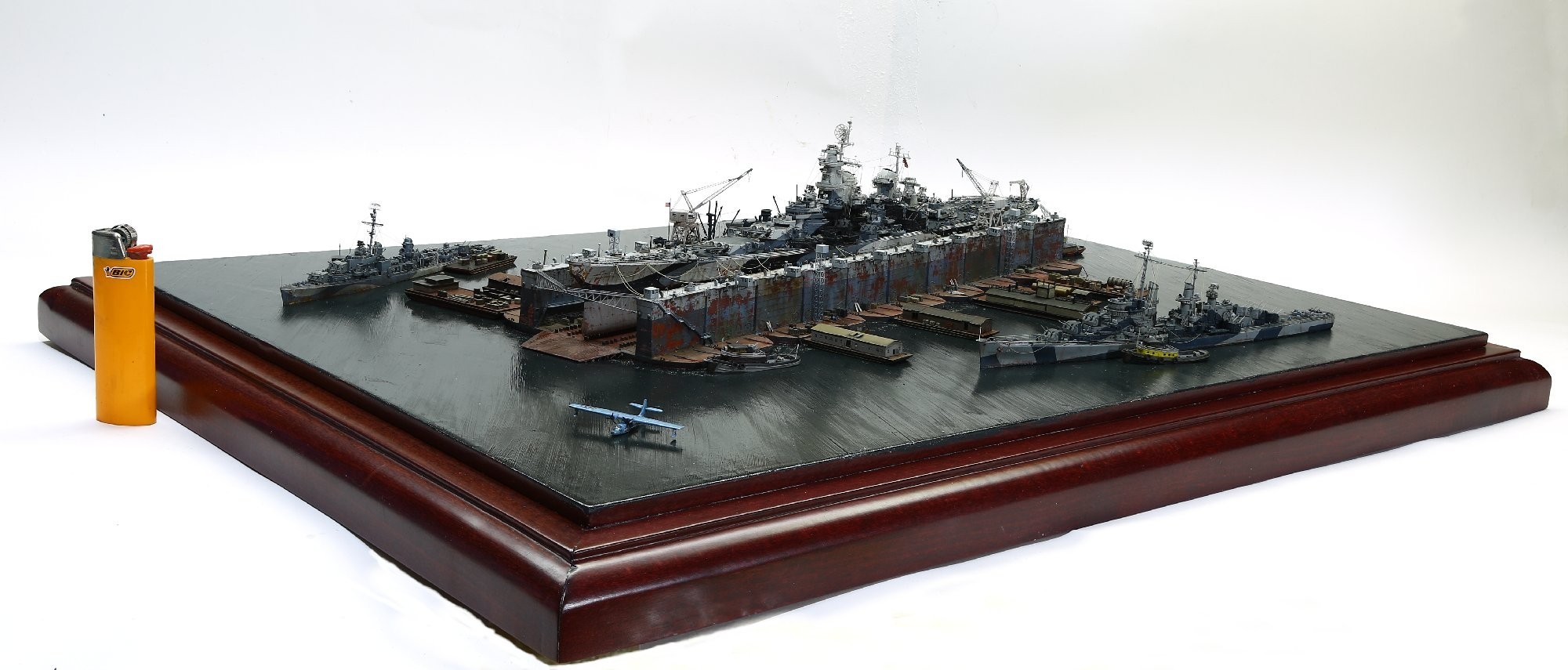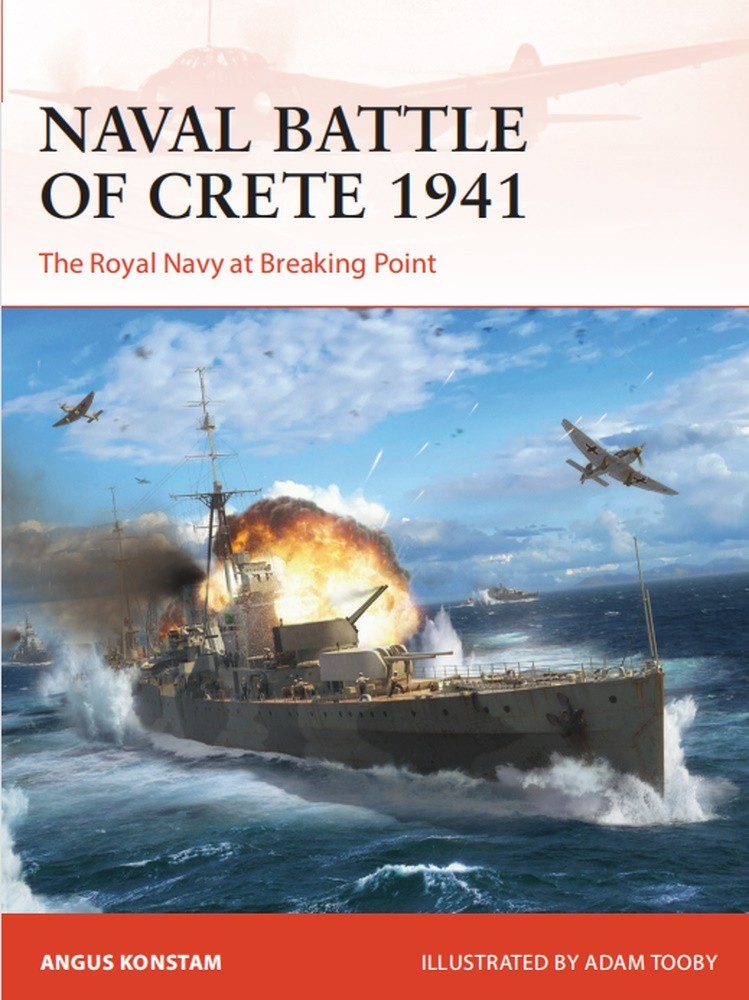
Introduction
The battle of Crete is one of the more fascinating campaigns of the early war. While short in comparison, in many ways it mirrors the campaign for Guadalcanal in the Pacific, except with airborne troops. The author writes;
It was a bloody chapter in the Royal Navy’s history, but it was also an inspiring one. Without the Mediterranean Fleet, tens of thousands of Allied troops would have been sacrificed in Greece and Crete. At one stage, as losses mounted, Cunningham faced pressure from the Admiralty to withdraw. He replied, ‘It takes the Navy three years to build a ship. It will take three hundred years to build a new tradition. The evacuation will continue.’ This came to symbolize the Navy’s determination as Cunningham put it; ‘to not let the Army down’. It was an attitude that would serve the Navy well during the battles that lay ahead.
Naval Battle Of Crete 1941 The Royal Navy at Breaking Point is a recent book from Osprey Publishing LTD, their 388th title in the series Campaign. Authored by Angus Konstam and illustrated by Adam Tooby, this 96-page book is available in softcover, PDF and ePUB formats. The softcover is cataloged with with ISBN 9781472854049. Supporting a gallery of photographs are colour illustrations, including battlescene artworks, maps, and 3D diagrams.
Osprey introduces this book with;
In April 1941, following the Axis invasion of Greece, the British Mediterranean Fleet was ordered to evacuate Allied survivors, many of which were taken to Crete. The Luftwaffe established itself in airfields on the Greek mainland, and formed plans to invade Crete by air and sea, under the cover of 500 fighters and bombers of the Luftwaffe's Fliegerkorps VIII. Facing them were a small and scattered garrison on the island, a handful of under-strength RAF squadrons and the hard-pressed warships of the Mediterranean Fleet. What happened next was a costly, but ultimately inspiring, naval battle, in which Royal Navy crews were placed under intense strain.
Modelers should appreciate this book for its inspiration for subjects and also the "why-how" explanations which the synergy of modeling and history stirs in so many of us. Modelers can find almost any subject to model from the Crete campaign. It witnessed air-to-air battles, bombing attacks, paratrooper landings, glider-borne assaults and air-landed troops employed against dug-in defenders supported by tanks, close air support, surface ship attacks against convoys and ships attacked by dive-bombers. Almost all of the machines and personnel are available in kits. This book focuses on the naval actions although the ground fighting, and especially air attacks, are covered in context. Now read on and be inspired.
Content
Naval Battle Of Crete 1941 is presented through 96 pages with a dozen chapters and subsections:

The book begins with useful list of acronyms and abbreviations, a note on measure, and a key to military symbols. First-hand accounts and anecdotes are found such as this account of the sinking of HMS Juno;
‘Suddenly there was a blinding flash … I have no recollection of any noise.’ He jumped overboard, as it was clear the ship was sinking. He continued: ‘Looking up from the water I could see the bows sliding under, and with no suction and hardly a ripple.’ Afterwards, the pilot who sank Juno was known in the Regia Aeronautica as Colpo Morassutti (‘Hit Morassutti’).
Although the main focus of this book is the air-sea battle, it begins explaining the success of Britain in North Africa and the Mediterranean just before the Afrika Korps joined the war, and the invasion of the Balkans and Greece. Eleven pages set the stage through Introduction, Chronology, and Opposing Commanders. The story of the ultimate fight off Crete begins with Italy’s declaration of war against England and France on 10 June1940, and how that drew Italy into a series of disastrous fights with England and Greece. Those blunders led the Germans to charge to the rescue into combat along the Mediterranean, resulting in a series of disasters for Britain, which culminated in the abandonment and naval evacuation of Crete. Four principle commanders are profiled: Admiral Andrew B. Cunningham; Vice Admiral Henry Pridham-Wippell; General der Flieger Baron Wolfram von Richthofen; Generalmajor Kurt Student. Several other supporting generals and admirals are introduced.
OPPOSING FORCES and OPPOSING PLANS examines the Allied and Axis plans and orders of battle. Herein we learn of the naval forces with detail such as numbers of types of ships, build years, whether they had a full compliment of weapons, capability of weapons, i.e., the relatively poor AA capability of Britain's High-Angle Control System (HACS). Germany’s airborne troops and parachutists, air assets and Kriegsmarine - even an Italian naval presence - are also explored and discussed. How each side planned to win - or not loose - the battle is concisely examined.
The Campaign uses 61 pages to explain the phases of the battle. Several maps support the text. The battles are concise as to be expected in trying to explain a major naval operation through 61 pages. The author presents good accounts of the actions, i.e., RM Sagittario's charge against a RN cruiser force. Participating units are named, often with the commander:
• Oberst Dinort’s StG 2, with three Gruppen of Ju 87s.
• Oberst Schalk’s ZG 26 with two Gruppen of Me 110s.
The author includes details of range available from various bases and weapon loads.
Aftermath sums up the losses and achievements of both sides and The Battlefield Today discusses where one can find artifacts of the vessels and aircraft used in the campaign.
Photographs, Artwork and Graphics
Osprey buttresses the text with a gallery of images and data tables. Many ships are depicted in photos, mainly "portrait" shots that are useful for modelers seeking configurations and camouflage. Included are several photos taken during the battles. Some images are good for detail such as a view of a twin mount 4.7in./45 Mark XII QF battery. The only color is represented by paintings.
Quality artwork by Adam Tooby offers a glimpse of what the camera missed.
1. Two-page action scene THE SAGITTARIO ACTION, 22 MAY 1941: an Italian torpedo boat against a British cruiser force.
2. Two-page action scene THE SINKING OF HMS KELLY, 23 MAY 1941: dramatic rendition of a Stuka strike.
3. Two-page action scene FORCE B UNDER ATTACK IN THE KASOS STRAIT, 29 MAY 1941: Stukas placing a bomb on HMS Orion's bridge.
Maps
1. The strategic situation, April–June 1941: the Mediterranean sea from Tunisia to Turkey.
2. Southern Aegean: the invasion of Crete, 20 May 1941: keyed to Allied and Axis bases, units, and movements.
3. Operations around the Kasos Strait, 20–22 May 1941
4. Operations around the Kythera Strait, 21–22 May 1941
5. Two-page 3D diagram THE LUPO CONVOY ACTION, 21 MAY 1941, 2229–2245HRS: keyed to seven RN and two RM forces, and 10 events.
6. Two-page 3D diagram BLACK THURSDAY, 22 MAY 1941, 2229–2245HRS: keyed to 10 events; three RN forces and several German units.
7. Operations to the west of Crete, 22–23 May 1941: keyed to 14 battles.
8. The evacuation, 23 May–1 June 1941: Crete to Egypt, keyed to 15 engagements and ships damaged/sunk.
9. Two-page 3D diagram FORCE B IN THE KASOS STRAIT, 29 MAY 1941: keyed to 15 attacks.
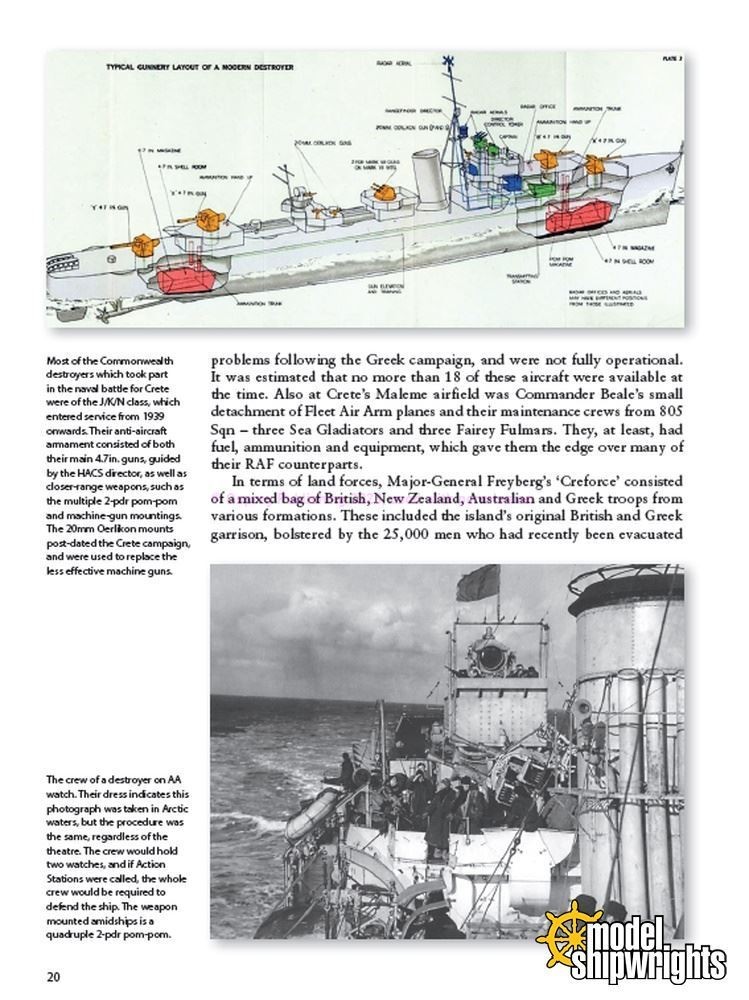
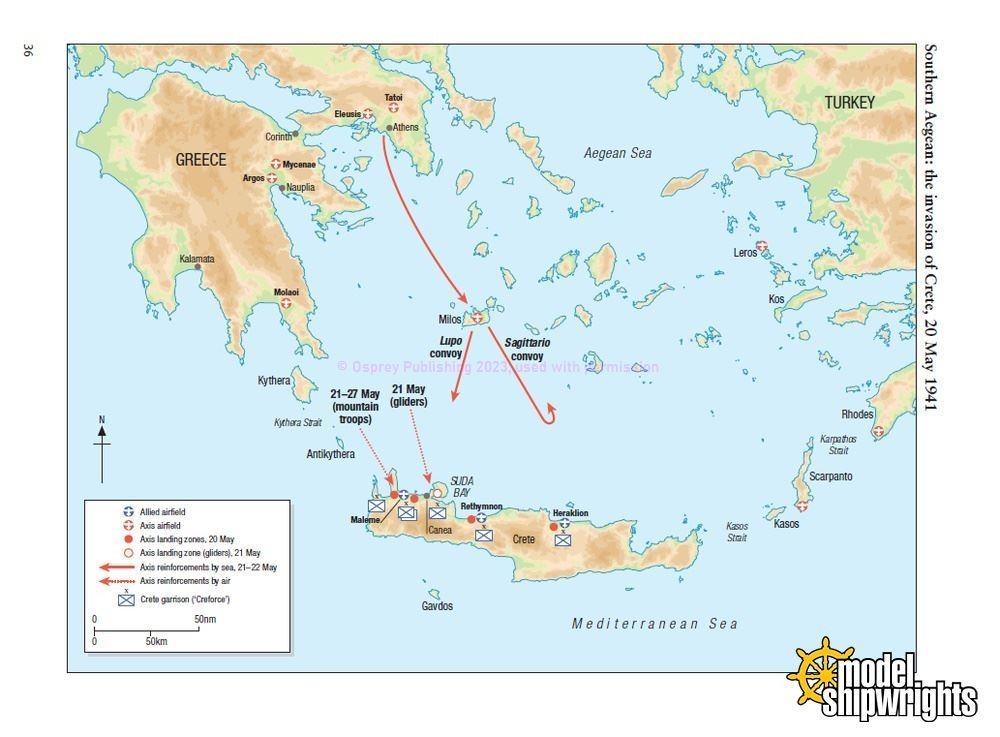
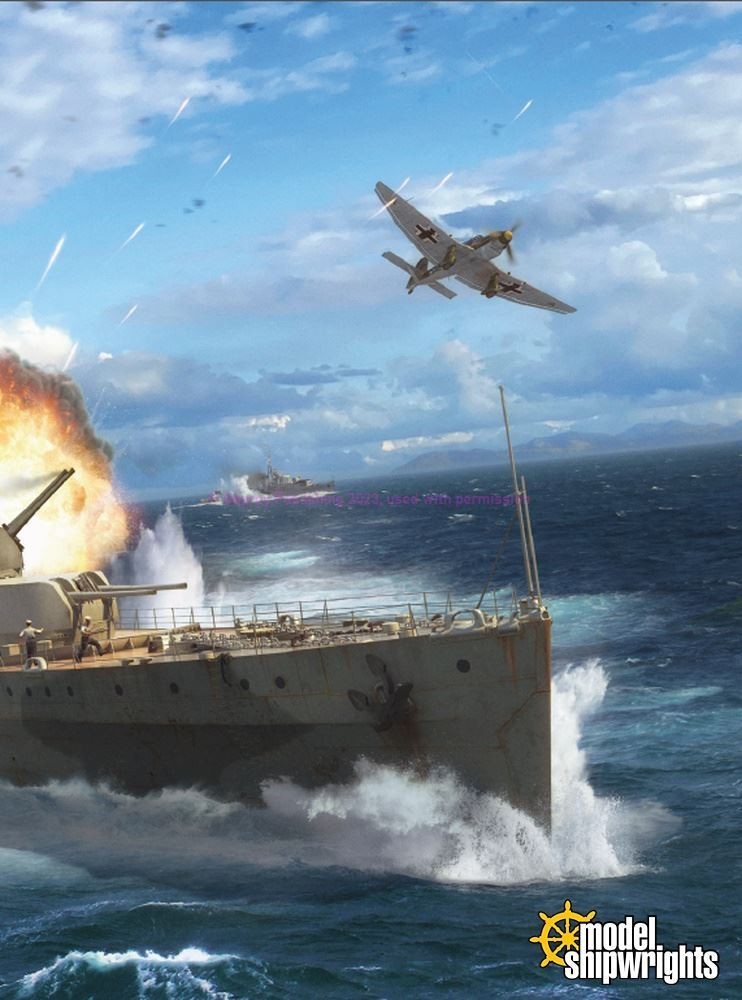
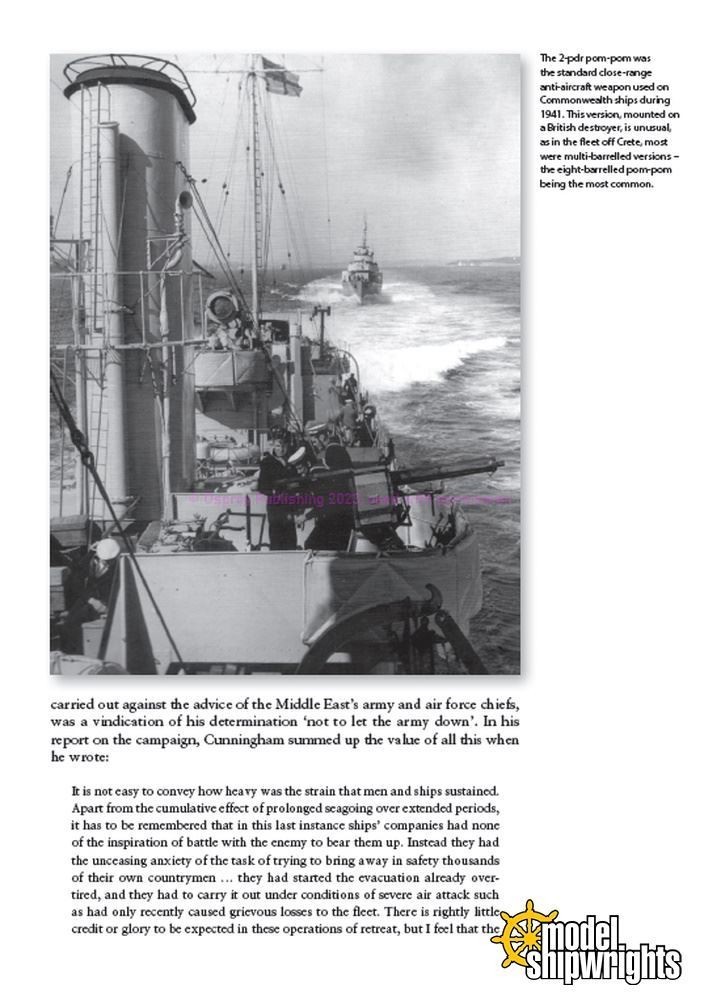
Conclusion
Naval Battle of Crete 1941 from Osprey pleases me as a thorough introduction to that brutal campaign of the early war. While no doubt thousands of pages have been written about Crete either in an overview or about specific events and participants, this book distills it into an intriguing introduction to the battle. With a gallery of supporting photographs and excellent artwork and graphics, the book possesses fine visual support.
Recommended.
Please remember to mention to Osprey and retailers that you saw this product here - on Model Shipwrights.










